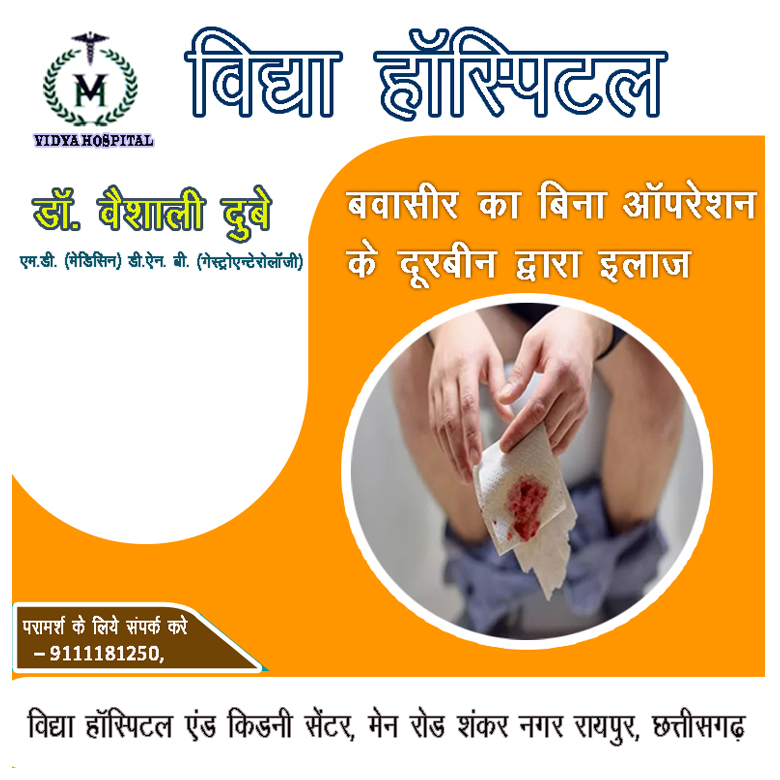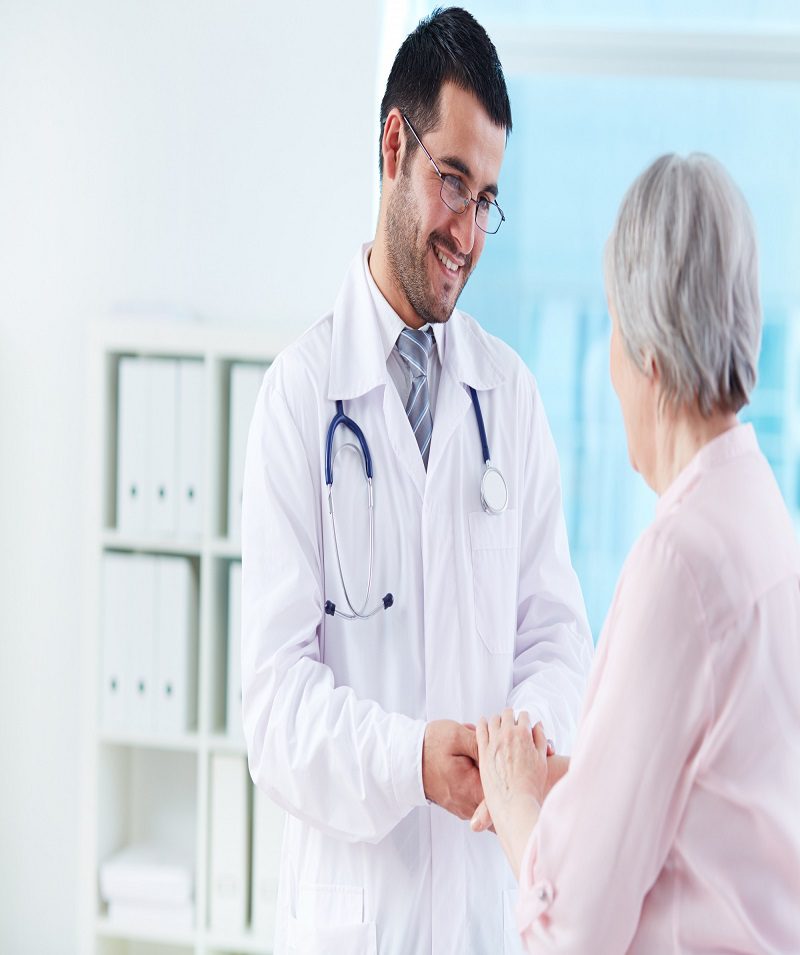Contents
- 1 What are hemorrhoids (Piles)?
- 2 Who might get hemorrhoids (Piles)?
- 2.1 What are the types of hemorrhoids (Piles)?
- 2.2 What causes hemorrhoids (Piles)?
- 2.3 What are the symptoms of hemorrhoids (Piles)?
- 2.4 How are hemorrhoids (Piles) diagnosed?
- 2.5 How do healthcare providers treat hemorrhoids (Piles)?
- 2.6 BOOK CONSULTATION FOR HEMORRHOIDS (PILES) TREATMENT WITH THE BEST GASTROENTEROLOGIST NOW
- 3 OR
- 4 EMERGENCY- CALL- 9111181250 24 hour Emergency and Ambulance services available.
- 5 Vidya hospital and kidney centre
What are hemorrhoids (Piles)?
Hemorrhoids (Piles) are swollen, enlarged veins that form inside and outside the anus and rectum. They can be painful, uncomfortable and cause rectal bleeding. Hemorrhoids (Piles) are also called piles. We’re all born with hemorrhoids (Piles), but at baseline, they don’t bother us. It’s only when they become swollen and enlarged that they produce irritating symptoms.
Who might get hemorrhoids (Piles)?
Anyone can get symptomatic hemorrhoids (Piles), even teenagers.
- Are overweight or obese.
- Are pregnant.
- Eat a low-fiber diet.
- Have chronic constipation or diarrhea.
- Regularly lift heavy objects.
- Spend a lot of time sitting on the toilet.
- Strain while having bowel movements.
What are the types of hemorrhoids (Piles)?
External: Swollen veins form underneath the skin around the anus. Your anus is the canal where poop comes out. External hemorrhoids (Piles) can be itchy and painful. Occasionally, they bleed. Sometimes they fill with blood that can clot. This is not dangerous, but can result in pain and swelling.
Internal: Swollen veins form inside the rectum. Your rectum is the part of the digestive system that connects the colon (large intestine) to the anus. Internal hemorrhoids (Piles) may bleed, but they usually aren’t painful.
Prolapsed: Both internal and external hemorrhoids (Piles) can prolapse, meaning they stretch and bulge outside of the anus. These hemorrhoids (Piles) may bleed or cause pain.
What’s the difference between hemorrhoids (Piles) and anal fissures?
Hemorrhoids (Piles) and anal fissures cause similar symptoms, such as itching, pain and bleeding. While swollen veins cause hemorrhoids (Piles), a tear in the lining of the anus causes an anal fissure. Your healthcare provide will do a physical exam and may order tests to find what’s causing your symptoms.
What causes hemorrhoids (Piles)?
Any sort of straining that increases pressure on your belly or lower extremities can cause anal and rectal veins to become swollen and inflamed. Hemorrhoids (Piles) may develop due to:
- Pelvic pressure from weight gain, especially during pregnancy.
- Pushing hard to have a bowel movement (poop) because of constipation.
- Straining to lift heavy objects or weightlifting.
What are the symptoms of hemorrhoids (Piles)?
Internal hemorrhoids (Piles) rarely cause pain (and typically can’t be felt) unless they prolapse. Many people with internal hemorrhoids (Piles) don’t know they have them because they don’t have symptoms. If you have symptoms of internal hemorrhoids (Piles), you might see blood on toilet paper, in stool or the toilet bowl. These are signs of rectal bleeding.
Signs of external hemorrhoids (Piles) include:
- Itchy anus.
- Hard lumps near the anus that feel sore or tender.
- Pain or ache in the anus, especially when you sit.
- Rectal bleeding.
- Prolapsed hemorrhoids (Piles) can be painful and uncomfortable. You may be able to feel them bulging outside the anus and gently push them back inside.
What other conditions cause hemorrhoid -type symptoms?
Different gastrointestinal disorders can cause rectal bleeding and other symptoms similar to hemorrhoids (Piles). Some of these disorders are life-threatening. For this reason, it’s important to let your healthcare provider know when you’re having symptoms.
Bowel diseases that can cause bleeding include:
- Colon cancer
- Crohn’s disease
- Ulcerative colitis
How are hemorrhoids (Piles) diagnosed?
Your healthcare provider diagnoses hemorrhoids (Piles) based on symptoms and a physical exam. You may also have:
- Digital rectal exam: Your provider inserts a gloved, lubricated finger into the rectum to feel for swollen veins.
- Proctoscopy: Your provider uses an anoscope (lighted tube) to view the lining of the anus and rectum.
- Sigmoidoscopy: Your provider uses a sigmoidoscope (lighted tube with a camera) to view inside the lower (sigmoid) part of the colon and rectum. Procedure types include flexible sigmoidoscopy and rigid sigmoidoscopy (proctoscopy).
What are the complications of hemorrhoids (Piles)?
Hemorrhoids (Piles) can be uncomfortable and painful, but they don’t tend to cause serious problems. Rarely, people with hemorrhoids (Piles) develop:
- Anemia
- Blood clots in external hemorrhoids (Piles)
- Skin tags (flap of tissue that hangs off skin).
- Strangulated hemorrhoids (Piles) (muscles in the anus cut off blood flow to a prolapsed internal hemorrhoid).

How can I treat hemorrhoids (Piles) at home?
Hemorrhoids (Piles) often go away on their own without treatment. Symptoms like pain and bleeding may last one week or slightly longer. In the meantime, you can take these steps to ease symptoms:
- Drink more water.
- Increase fiber intake through diet and supplements. Try to obtain at least 20-35 grams of daily fiber intake
- Soak in a warm bath (sitz bath) for 10 to 20 minutes a day.
- Soften stool by taking laxatives.
- Take nonsteroidal anti-inflammatory drugs (NSAIDs) for pain and inflammation.
How do healthcare providers treat hemorrhoids (Piles)?
- Rubber band ligation: A small rubber band placed around the base of a hemorrhoid cuts off blood supply to the vein.
- Electrocoagulation: An electric current stops blood flow to a hemorrhoid.
- Infrared coagulation: A small probe inserted into the rectum transmits heat to get rid of the hemorrhoid.
- Sclerotherapy: A chemical injected into the swollen vein destroys hemorrhoid tissue.
- Hemorrhoidectomy: Surgery removes large external hemorrhoids (Piles) or prolapsed internal ones.
- Hemorrhoid stapling: A stapling instrument removes an internal hemorrhoid. Or it pulls a prolapsed internal hemorrhoid back inside the anus and holds it there.
BOOK CONSULTATION FOR HEMORRHOIDS (PILES) TREATMENT WITH THE BEST GASTROENTEROLOGIST NOW

OR
EMERGENCY- CALL- 9111181250
24 hour Emergency and Ambulance services available.
How can I prevent hemorrhoids (Piles)?
- Don’t sit too long or push too hard on the toilet.
- Go the toilet when the urge hits — don’t delay bowel movements.
- Drink plenty of water throughout the day.
- Eat more high-fiber foods (fresh fruits, vegetables and whole grains) or take supplements. Generally, women should aim for 25 grams of fiber per day, while men should get 35 grams of fiber.
- Stay physically active. Being on the move keeps bowels moving.
- Take laxatives or use enemas only as recommended by your healthcare provider. Too many laxatives or enemas can make it hard for your body to regulate how you pass your stool.
What is the prognosis (outlook) for people who have hemorrhoids (Piles)?
Most hemorrhoid symptoms improve within a week with at-home treatments. If hemorrhoids (Piles) cause extreme pain and discomfort, a medical procedure or even surgery may help.
When should I call the doctor?
- Abdominal pain.
- Chronic constipation or diarrhea.
- Fever and chills.
- Nausea and vomiting.
- Severe rectal bleeding and pain.
TO BOOK CONSULTATION WITH THE BEST GASTROENTEROLOGIST IN RAIPUR NOW
To get more information about Hemorrhoids (Piles) use the links below
Vidya hospital and kidney centre
Address: Shankar nagar Main road, Raipur(CG)
Email: [email protected]
Phone: 9111181250, 07714281198,9827197924